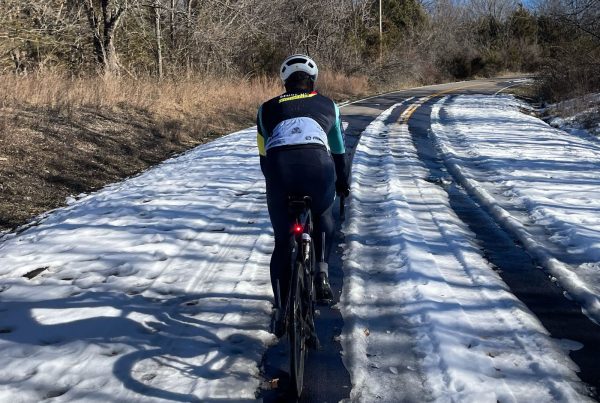Malcolm Gladwell’s 10,000-hour theory for mastery isn’t perfect, but it provides valuable perspective. Breaking things down by numbers has helped me contextualize my latest efforts in running and language learning.

Cycling Training: A Lifetime on the Bike
Since July 2008, I’ve spent at least 40 hours per week immersed in training and bike racing. My first century ride was at age 10 with my dad, but back then, I rode for the snacks at SAG stops—not for training or racing. So, I won’t count those early miles.
869 weeks × 40 hours/week = 34,760 hours
This time includes education, coaching athletes, personal training, 500+ races, and countless hours discussing race strategy on long drives to events. I’ve spent late nights in obscure forum threads (the Google Wattage Group is still a goldmine) searching for every nuance in cycling performance.
At this point, I’m well past the early confidence spike of the Dunning-Kruger effect. I trust my ability to train both myself and others effectively, while also knowing my own limitations.
Running: A Beginner with Some Confidence
Running presents a unique challenge. While there’s carryover from cycling and strength training, it’s still a different sport with its own movement patterns and required adaptations. My body doesn’t care how much endurance experience I have—I have to go through the same process as any beginner.
Running-Specific Hours:
- Total Hours Running: ~150
- 112 logged in TrainingPeaks
- Maybe 40-50 more before logging began (being generous)
Lessons Learned the Hard Way:
- Careful progressions are key—too much, too fast leads to injury.
- Soreness isn’t always good—joint pain is a sign I need recovery, not something to push through (repeat this 10 more times, Kent).
- TrainingPeaks doesn’t rule my life—just because a plan is written doesn’t mean I should blindly follow it at all costs.
Where I Stand
With just 150 hours of running under my belt, I’m still in the beginner phase. My goals—a sub-20-minute 5K and a sub-5-minute mile—are achievable, but the timeline isn’t set. For now, my focus is on consistency over months and years.
Spanish: A Whole New Challenge
I’ve always wanted to learn a second language, but I never committed until Sarah and I booked our honeymoon to Puerto Vallarta. That was the push I needed. Now, 475+ consecutive days into learning Spanish, I’ve learned a lot—not just about the language but about learning itself.
The #1 Lesson: There Are No Shortcuts
Language apps and programs promising fluency in a few months are misleading. There’s no substitute for time spent with the language. The Foreign Service Institute (FSI) estimates that reaching a professional working proficiency in Spanish takes about 1,200 hours of focused, immersive learning—that’s 40 hours per week for 30+ weeks.
Language Learning by the Numbers:
- 5 minutes/day for 1 year = 30 hours
- 30 minutes/day for 1 year = 182 hours
- 2 hours/day for 1 year = 730 hours
Current Goals and Challenges:
- Daily practice (at least 60 minutes/day)—reading, Anki flashcards, Duolingo, and listening to native content.
- Coaching in Spanish—I want to confidently discuss training plans and provide athlete feedback in Spanish by age 40.
- Overcoming the fear of sounding stupid—the biggest hurdle in speaking a new language.
- Finding more people to talk with—creating real-life demand for the language.
- Comprehension progress—I can follow 90% of beginner content and get the general gist of intermediate material, but advanced books still challenge me.
Bringing It Back to Cycling
So, what’s the point of all this? Big goals require big commitments. Whether it’s cycling, running, or language learning, meaningful progress happens over months and years—not weeks.
Progress Looks Different for Everyone
- Your power might improve faster than your bike-handling skills—that was my experience early on.
- I could hang with the top regional riders on a straight road but struggled in technical crits.
- It took four years of racing as a Cat 1 before I finally felt confident railing turns at race pace.
Final Takeaway: Trust the Process
Whatever your goal—whether it’s in sport, learning, or life—be patient. Put in the hours. Progress isn’t linear, and improvement happens in phases. When it feels slow, remind yourself: if you keep showing up and putting in the work, the results will come.
Ready to Level Up Your Training?
At Move Up Endurance Coaching, we help athletes prepare for every aspect of endurance racing. Whether you’re tackling your first event or fine-tuning for peak performance, our expert coaching can help you reach your goals.
👉 Meet Our Coaching Staff
👉 Sign Up for Coaching
Don’t just ride—thrive. Let us help you move up to the next level.






